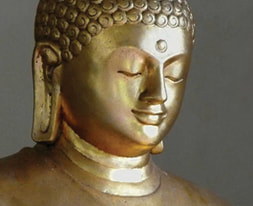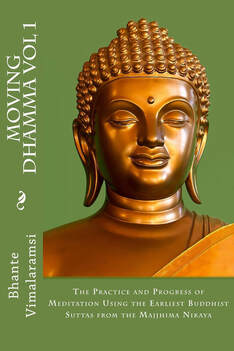Active Instructors

TWIM Instructors are dedicated to the principle and meditation practices described in the earliest Buddhist suttas. Each has many years of personal practice, study, formal training, and experience guiding others to practice TWIM. They share in their enthusiasm to help other understand the principles and develop capacity to achieve results with meaningful progress in the stages of meditation to the goal.
In Memory of our Beloved Teachers and Friends
About Retreats and Classes

TWIM classes and retreat courses are growing in popularity around the world. Many who are seeking awakening find that TWIM is both enjoyable to practice and immediately effective. The practice helps dissolve habitual thought patterns and painful emotional states, opening the way to greater tranquility, ease, and relief.
Each course includes one-on-one guidance from experienced instructors to ensure clear understanding and steady progress through the stages of meditation. While retreats and classes may vary slightly by teacher, all TWIM instructors share the same precise methodology, offering supportive mentoring that builds confidence, skill, and direct insight. Rooted in the earliest Buddhist Pali texts, TWIM provides a clear, compassionate path for anyone ready to experience meditation that is simple, effective, and deeply transformative.
About TWIM Instructors
TWIM instructors are dedicated to meditation practice, study, and living with steadfast social and moral integrity. Their foundation is rooted in kindness, compassion, and genuine concern for the welfare of all beings. They choose to teach because they have gained the knowledge and experience needed to help others walk the path that leads to the end of unhappiness and suffering in all its forms.
1. Ethical Conduct – They uphold the ethical precepts of Buddhism, living with honesty, integrity, and compassion in their actions and relationships.
2. Deep Meditation Practice – They maintain a well-established personal practice, often with many years of diverse and rigorous training.
3. Embodiment of the Teachings – They live the Dhamma in daily life, demonstrating qualities such as mindfulness, kindness, patience, and wisdom.
4. Clear and Skillful Communication – They make Buddhist principles and meditation practices accessible and relevant, using clear explanations and varied methods to meet the needs of different students.
5. Compassion and Empathy – They approach students with genuine care, creating a safe, supportive environment that encourages growth, understanding, and joy in the practice.
The Founder and first TWIM Teacher
Venerable Bhante Vimalaramsi, founder of the Tranquil Wisdom Insight Meditation (TWIM) method, developed the Six R’s as a simple, practical way to apply the Buddha’s teaching of Right Effort. After decades of intensive meditation and study of the earliest Buddhist texts, Bhante created this clear sequence of steps to address distractions and dissolve the causes of suffering.
Right Effort, as described in the suttas, is not only about how to meditate but also how to skillfully handle unpleasant thoughts and emotions that arise both on the cushion and in daily life. Bhante discovered that the key lies in consciously engaging a set of actions that let go of unwholesome states and nurture wholesome ones.
He explained that unpleasant feelings that typically occur as habitual distractions are rooted in craving—the root casue of the underlying tension and tightness we often feel in the head, neck, and shoulders.
The Six R’s begin with Recognizing craving experienced as an unwholesome feeling, then Releasing the attention from it , and Relaxing the bod. From there, Re-smile: “Smile with your heart, smile with your eyes,” he often said. This gentle, sincere smile lightens the mind, making space for joy and spaciousness. With this uplifted attitude, the mind naturally Returns to the meditation object which is typically loving-kindness and Repeat the process whenever the attention is fully distracted.
Bhante emphasized that the roots of unhappiness are not hard-wired into our biology; they are more like mental “software” patterns that can be reconditioned. By applying the Six R’s, habitual craving weakens, and the mind becomes more peaceful, balanced, and open. When the process matures, the mind experiences full release—the freedom of Nibbāna.

Beginning instructions audio clip. (50 minutes)
Intro to TWIM Practice – Venerable Bhante Vimalaramsi
"This is an "all the time practice"
The Six R’s and the Science of Well-Being
The Six R’s method not only reflects the wisdom of early Buddhist teachings but also aligns with modern neuroscience and psychology. By practicing the Six R’s, meditators repeatedly activate and strengthen the parasympathetic nervous system (PNS)—the body’s natural “rest and restore” mode—while balancing the central nervous system (CNS).
For beginners, the Six R’s may be applied every few minutes during meditation. Each time, this gentle cycle reduces sympathetic nervous system over-activation (the “fight, flight, or freeze” response) and allows the PNS to dominate. The parasympathetic system regulates heart rate, digestion, breathing, immune function, and overall repair. When it is engaged, stress hormones like cortisol and adrenaline decrease, while neurotransmitters such as dopamine, serotonin, and oxytocin increase—chemicals strongly linked to calm, joy, and connection. Scientific studies have shown that meditation practices, especially loving-kindness meditation, lower cortisol levels and increase positive affect (Fredrickson et al., 2008; Hoge et al., 2013).
Psychological research also confirms that mindfulness-based practices enhance emotional regulation, resilience, and cognitive flexibility by strengthening prefrontal cortex activity while quieting the amygdala—the brain’s threat detection center (Tang, Hölzel, & Posner, 2015). This means that each time you “Recognize, Release, Relax, Re-Smile, Return, and Repeat,” you are literally rewiring your brain toward greater clarity, peace, and compassion.
Over time, the Six R’s function as a mental reset button, usable not only in meditation but equally important in daily life. Practitioners discover that wholesome states—such as kindness, equanimity, and joy—become the mind’s natural baseline. This shift supports what the Buddha mapped out as the Seven Factors of Awakening: mindfulness, discernment, energy, joy, tranquility, collectedness, and equanimity. Modern psychology would describe these as the foundations of mental health and well-being.
Ultimately, the Six R’s guide us toward liberation by reconditioning the mind away from craving and stress and toward balance, relief, and resulting in awakening.
✅ Scientific Support
Fredrickson, B. L., et al. (2008). Open hearts build lives: Positive emotions, induced through loving-kindness meditation, build consequential personal resources. Journal of Personality and Social Psychology.
Hoge, E. A., et al. (2013). Loving-kindness meditation practice associated with oxytocin release and reduced distress. Psychiatry Research.
Tang, Y. Y., Hölzel, B. K., & Posner, M. I. (2015). The neuroscience of mindfulness meditation. Nature Reviews Neuroscience.

Applying the Six Rs cultivates brain and heart coherence. It aligns the CNS and PNS in homeostasis. This is the optional functioning for biological conditions. The benefits of heart and brain coherence directly affects behavior:
- Feeling whole and wholesome.
- Feeling like you have a place the World
- Feeling peace an contentment
- Feeling free of stress
- Feeling vitality and energized
- Feeling spontaneous and creative
- Feeling connected to people and nature
- Being emotional resilience
- Being intuitive
- Being intellectually honest and clear
The heart and the brain are deeply connected, and you can sense this connection by practicing heart-brain coherence techniques.Find more about the science and benefits of brain and heart coherence at Heartmath Institute and Alleviant Integrated Mental Health.
Amazon Book Reviews
- Here are crystal clear instructions on loving kindness meditation practice. The author claims it’s a principal path to enlightenment that rivals or surpasses the familiar mindfulness of breathing practice which was also taught by the Buddha. Considering the fact this book is under fifty pages, it’s amazing the number of basic concepts touched upon, from posture to hindrances as the author describes the steps involved in what he calls “Tranquil Wisdom Insight Meditation (T.W.I.M.)” which is a loving kindness meditation. As bonus the author discusses 6 R’s to keep your practice on point, and a walking meditation to re-energize it.
- Looking for a brief description to establish a mindful meditation practice? Here’s a wonderful candidate. What could be better than loving kindness?

